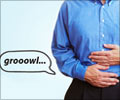Sleep and eating need to be studied together, research at The Scripps Research Institute (TSRI) claimed. Sleep is affected by feeding behavior.

‘Sleep loss couldn't be explained by caffeine intake alone. Instead, sleep loss is mediated by changes in feeding behavior.’





Caffeine is known to stave off sleep in humans through pharmacological effects on the adenosine receptor. Nonetheless, many studies in mammals have shown genetic differences in responses to caffeine. Interestingly, caffeine apparently can prevent sleep in fruit flies despite the fact that it doesn't act through their adenosine receptor.Erin Keebaugh, Ph.D., a postdoctoral researcher in Associate Professor William Ja's Laboratory at TSRI, suspected that the systems responsible for caffeine's impact on fly (and maybe human) sleep patterns are more complex than a single caffeine and receptor interaction.
In her study, published in the journal Sleep, her team gave groups of flies varying levels of dietary caffeine. They then measured how much the flies slept in the following 24 hours while on those diets. They also studied whether varying levels of caffeine impacted the insects' feeding behavior by measuring how much they ate over the same 24-hour period.
Interestingly, the team found that sleep loss couldn't be explained by caffeine intake alone. Instead, they believe that the sleep loss was mediated by changes in the animal's feeding behavior. "There could still be a pharmacological effect, but there's definitely dietary inputs to that," said Keebaugh.
The study reinforced the idea that the processes of sleep and eating need to be studied together, explained the scientists, especially as a growing number of researchers investigate the relationship between sleep and metabolic disorders. Further studies into this relationship could lead to the development of therapies that treat disorders such as obesity and diabetes.
Advertisement
To that end, another member of the Ja Laboratory, Graduate Student Keith Murphy, has developed a new open-source, customizable technique for jointly studying multiple fly behaviors. Many studies designed to understand the interactions between multiple fly behaviors require researchers to measure each behavior separately; for example, one study measures how much the flies eat while a second study measures how much they sleep, and then the data are combined and compared. With Murphy's device, the Activity Recording CAFE (ARC), researchers could measure both behaviors simultaneously, giving the researchers a cleaner, simpler strategy to investigate previously convoluted questions.
Using the ARC protocol, as described in a paper recently published in Nature Protocols, anyone with access to a 3D printer can print the chamber and set it up in two hours or less to collect fly data. The chamber is hooked up to a computer that continuously tracks both the amount of food that a fly consumes and its position in the chamber, which can tell a researcher whether or not it's sleeping.
Advertisement
"We're hoping that this paper creates a community around the tool and people come up with new uses," said Murphy. "If others get on board, this thing could change what a small lab can do."
Source-Eurekalert















